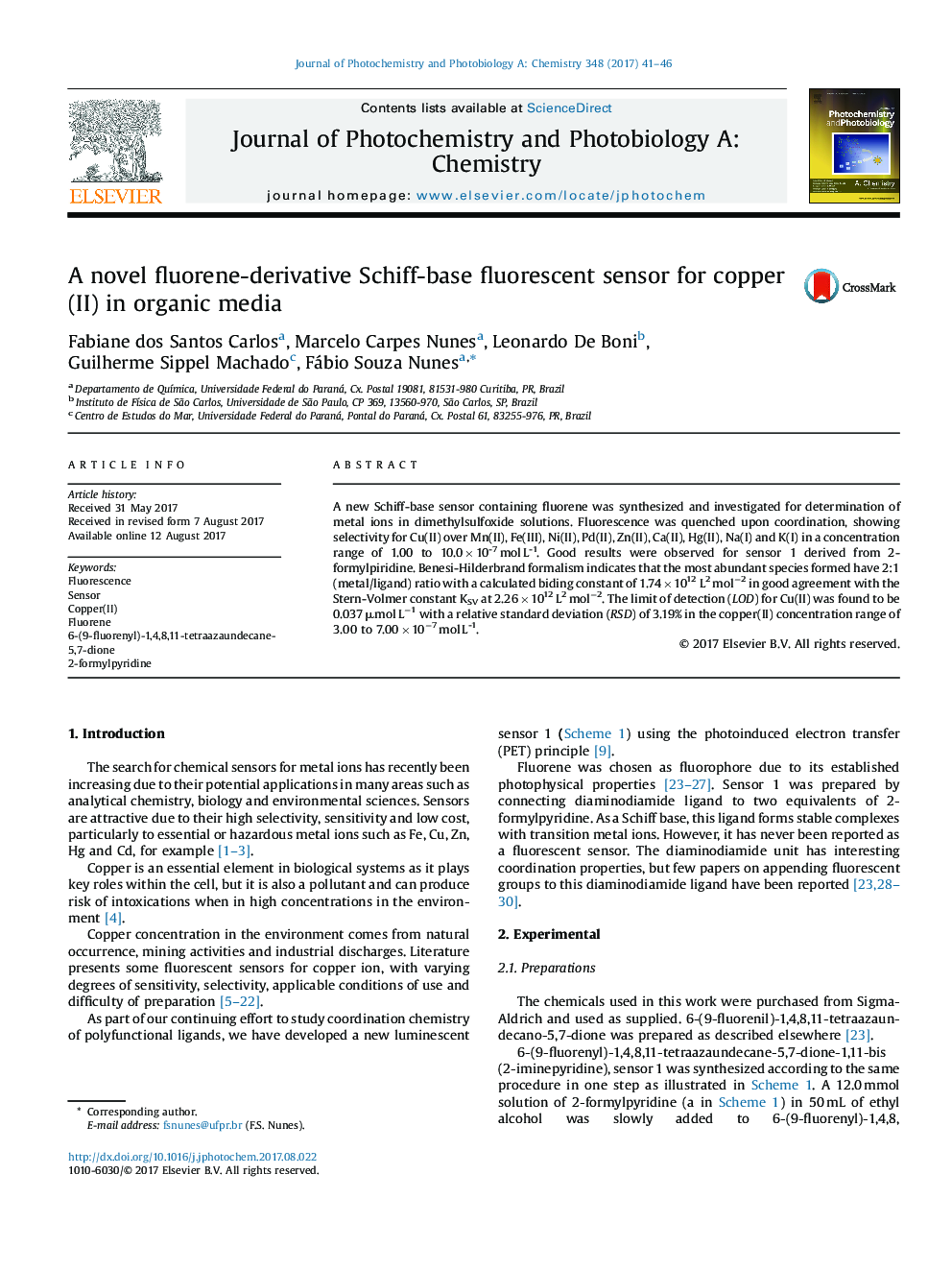| Article ID | Journal | Published Year | Pages | File Type |
|---|---|---|---|---|
| 6452351 | Journal of Photochemistry and Photobiology A: Chemistry | 2017 | 6 Pages |
â¢Fluorescent chemosensor formed highly stable binuclear complexes with Cu(II).â¢Sensor showed distinctive selectivity, elevated binding constant and one of the lowest detection limit to Cu(II).â¢Stern-Volmer, Benesi-Hilderbrand and Job's methods suggest a 2:1 (metal/ligand) stoichiometry.
A new Schiff-base sensor containing fluorene was synthesized and investigated for determination of metal ions in dimethylsulfoxide solutions. Fluorescence was quenched upon coordination, showing selectivity for Cu(II) over Mn(II), Fe(III), Ni(II), Pd(II), Zn(II), Ca(II), Hg(II), Na(I) and K(I) in a concentration range of 1.00 to 10.0 Ã 10â7 mol Lâ1. Good results were observed for sensor 1 derived from 2âformylpiridine. BenesiâHilderbrand formalism indicates that the most abundant species formed have 2:1 (metal/ligand) ratio with a calculated biding constant of 1.74 Ã 1012 L2 molâ2 in good agreement with the SternâVolmer constant KSV at 2.26 Ã 1012 L2 molâ2. The limit of detection (LOD) for Cu(II) was found to be 0.037 μmol Lâ1 with a relative standard deviation (RSD) of 3.19% in the copper(II) concentration range of 3.00 to 7.00 Ã 10â7 mol Lâ1.
